| Umělec magazine 2007/4 >> THE MILITANT AESTHETIC OF MIHAEL MILUNOVIĆ | List of all editions. | ||||||||||||
|
|||||||||||||
THE MILITANT AESTHETIC OF MIHAEL MILUNOVIĆUmělec magazine 2007/401.04.2007 Sasa Janić | serbia | en cs de es |
|||||||||||||
|
The contemporary art scene in Serbia is currently in an unenviable, albeit interesting position. Amidst the ebb and flow of the contemporary art system and the driving force of capitalist logic, the Serbian art scene is beginning to come into its own. Escaping from the burdensome weight of history and the widespread military influence of the nineties, it is addressing basic existential issues and starting to seek its own identity within the wider lens of European art and culture. Since Serbian society is defined by its transitional character, it is no surprise that this mode of change is also reflected in the art scene. Numerous art institutions, leftover from the previous regime, simply have not been able to keep up with these transformations. They are no longer current, competitive or appealing establishments for the public and artists. On the other hand, new spaces and organizations are staging a revival of the arts, inspiring confidence with their evident strength and potential—fueled by the young generations who are working hard to breathe new life into the half-dead Serbian art scene.
In the last few years we have witnessed the raging debate over whether or not a contemporary art scene in Serbia exists at all? No matter what we make of it or how we interpret it, it obviously does exist. Perhaps the more appropriate question would be what is the scope and quality of the contemporary art scene in Serbia? If we analyze the situation in Belgrade, Serbia’s largest cultural center, we are confronted with some disastrous results. There are merely a few serious private galleries and exhibition venues, supplemented by a sparse number of informal and alternative spaces. These numbers illustrate that there is no established system for the support of a contemporary art scene, making its coherence and ability to thrive nearly impossible. The lack of professional showrooms interferes a great deal with the intentions of both artists and curators. The situation in the rest of Serbia is even more tragic. Apart from the already mentioned shortcomings, poor production capacities on the part of artists and galleries as well as the lack of interest from the Serbian ministry of culture to invest any serious resources into contemporary visual arts contribute to the current state of the art scene in Serbia. Lack of a market, serious galleries or modern legal regulations that would stimulate the investment of art, force us to talk not about the prospect of progress for Serbian art but about its mere survival. Rare exhibitions of Serbian art that have been organized abroad have almost no support from official institutions; they barely survive on the personal investment of organizers and artists. The decennial deadlock simply cannot be broken by such meager efforts. First it is essential that the Serbian art scene have a positive image on a national and international scale. It is no wonder that this current situation drives many great artists such as Uros Djuric, Biljana Djurdjevic, Miodrag Krkobabic, Tanja Ostojic, Dejan Kaludjerovic and many others to look for work almost exclusively abroad. Belgrade artist, Mihael Milunović, is included in this group as he currently lives and works between France and Serbia. Unlike his potential counterparts in Serbia, his works can be found in some of the most important collections and museums of contemporary art. A devotion to the craft, and attention to details in a range of media set Milunović apart. In his drawings, oils on canvas, installations, objects and photographs, Milunović demonstrates a clear and personal point of view. The spectrum of his subjects are drawn from symbols of modern life, war and destruction: fortresses, advertising and emblems, weapons, bondage, coats of arms, and flags. Politics, ideologies, money and the desire for control, and a self-reflexive style of questioning are characteristic of Milunović’s works. The implacable destruction that defines modernity has inspired the artist to create his objects and sculptures like timeless modules, resistant to the contemporary state of chaos. Mihael Milunović makes us confront our own uneasiness as we peer past the thin guise of illusion that once provided a feeling of safety and delve into an uncertain awareness of what is happening around us. In the complicated cartography of the state and socio-political national relations, a need for control is often accomplished by means of force. The inexorable reality of survival rests on the principle that the stronger and more powerful forces are the victorious rulers; this principle has aroused suspicion between people and driven opposing factions on a quest to develop extremely destructive weapons. This human obsession for power and security is exactly what Milunović explores in some of his pieces. In works such as Miracles and Reliquary Gun, a new-old masculinity is revealed. At the core of this discovery is the idea of strength derived from tools, mythical objects that possess magical powers. These arms, manufactured though assembly line labor, are placed on a pedestal of worship and regarded with an heir of holiness. In a pseudo-religious process these seemingly violent and aggressive symbols of destruction are transformed into absolute, apparently lifesaving, wondrous objects. Milunović challenges the dominant perception of weaponry. He creates new models and types of weapons, altering their function, purpose and meaning by displaying them in a near holy context where they are to be read as aesthetic objects. A sword, a rifle, the power that a politician possesses or the effect of an advertising campaign, are each inspiring to Milunović as he aspires to reveal latent symbolic and metaphorical meanings in his subjects. The culture of violence in modern society, regardless of what medium it is being translated into, is distinguished by its omnipresence. The violence is all around us: on television, in the movies, on the internet and in the papers. The turning point came when the first Gulf War was broadcast live 24/7. At this time the fascination with violence and the ability to follow events as they were happening turned into inimitable perverted voyeurism. The brutally powerful visual components of the new cyber-world have only furthered this sick fascination. When discussing Milunović’s work, we must bear in mind that it does not represent glorification or relativism; it is purely the articulation of reality. Throughout the centuries, the history of humankind has been understood via the conquests, wars and conflicts that have defined its development. From prehistoric times it seems we have been raised to think in the binary terms of war: offensive vs. defensive. Almost every boy wanted to become a soldier at some point of his childhood. Growing up, most boys, and many girls for that matter, play violent games that reinforce the tactics of warfare. Therefore it is clear that the culture of violence has paralleled the development of civilization and in the process has become rooted in our collective conscience, reinforced as a way of life. An equal but opposite myth of romance and heroism has developed alongside the culture of violence, reinforcing its binary nature. The story of the noble fighter, the superhero, the hero who risks all to combat evil has been has been idealized by society in novels, comic strips and movies. Our susceptibility to these ideas serves as proof of how permeable our society’s system of values really is. The militant aesthetic of Milunović’s work reexamines and ultimately criticizes the elitist systems of power that have been put into place by modern countries. These issues remain all the more relevant as Serbian society has been confined to a closed environment plagued by destructive behavior, material deterioration, and corrupt values. In this landscape it’s almost impossible to remain cogniscent of even the most basic distinctions, such as the difference between the collective and the individual. Mihael exploits this historical and cultural heritage in order to create an expression of the contemporary moment. Considering the incredible amount of resources, energy and effort that the world’s superpowers have dedicated to the arms race, it seems like a chance miracle that mankind has survived the 20th century. Take for example the precarious Cold War equilibrium that situates the world at the edge of an abyss of internecine destruction or nuclear apocalypse. This situation has incited fear of an impending Doomsday. This fear has been marketed into many Hollywood movies about that inevitable Doomsday. This ever popular theme is driven by a plot where a simple malfunction or human error turn operations intended to “protect” us into systems that have the capacity to conduct euthanasia on the entire human race. Milunović’s performances like Kissing the Flag or The March of Flags elaborate on these themes and provide a counter to the Hollywood vision. He questions mass spectacle identification with ideological and political symbols, stereotypes of democratic institutions, rulers and politicians, war glorification and military aesthetics. These social rituals have an incredible capability to mobilize people and encourage brainstorming within utopian ideologies. Individual identification with the mass power and the illusion of belonging, created by specific symbols, notions or actions, is no longer an image of “something else” or “someone else,” but an urge hidden inside each of us. In this context philosophical contributions to the intellectual understanding of communicative society, such as that of Habermas, seem futile as the issue moves away from the realm of philosophy and the human sciences. Knowledge and communication are increasingly conveyed via symbols, advertisements, and television programs. In a series of works titled Patches for the New Millennium, Mihael Milunović creates provocative new emblems: an ironic socio-political gallery of symbols that reflect global geopolitical processes. With a sarcastic introduction of comical elements the artist creates his own visual codes by playing with stereotypes of modern advertising. The meaning of the advertising aesthetic is being shifted. Through adapting the vernacular of marketing strategies aimed at powerful national rulers Milunović exposes a great deal about the aspirations and understandings of this target audience. The monumental installation Fortress F shows a France made up of 18th century elements featuring walled-in defensive ramparts, endless, absurd fortresses crammed with bastions and parapets connected by unrealistic and unnecessary corridors and passages. This hyperbolic image of the city is meant to illustrate the current state of contemporary European society. Most of the characteristics of the built environment are completely ludicrous and point to the ways in which France has been unsuccessful in working for democracy, openness and multiculturalism on an international scale. This fantastic visual construction is at the same time a critique and a warning. It begs many questions: How open is European society really? Do we still need borders, and where in fact are they? Do these boundaries and edges exist merely in our heads or on some non-existent map? How do we, but also, how will we, respond to influences of other cultures and nations? In the coat of arms series titled Succession, the artist explores parallel existences through the use of coats of arms and flags from different nations. These works are as much about the materiality of their subject—a portrait of an eagle—as the specific perplexingly perceptual experience that they induce. In his latest works Milunović’s way of synthesizing an entirely novel manner of expression with a unique format of presentation is remarkable. He fearlessly toes the boundaries between illusion and reality. Further, he encourages the viewer to consider the difficulty of understanding anything in a system overburdened and oversaturated with money, advertising, information and big brands. Brand is everything; we are made up of brands, we consume them, we are dressed in them, we dream in their terms. With Milunović’s work we witness the emergence of a new discourse, one that revises the way that we comprehend and assess value in any given work. To understand the work we must first shift away from assigning value derived purely from the modern design aesthetic. This scale is no longer applicable as Milunović’s work attempts to wipe the borders between fiction and reality and introduce us to the realm of life itself. In his object-installations international companies provide the paradigm through which to critically examine reality defined by the relation between individuals and society. Simple Pyramid is a model of a universe, a metaphor for modern society in the most existential sense possible, a simulacrum of our collective destinies and socio-political relations. Using a range of symbols and marks Mihael creates a fantastic universe of objects. He carries out a Deshan inversion by placing his creations into precisely defined positions and systems, assigning them new functions and meanings that further emphasize their fragile position. This cycle, a matrix of familiar emblems, is, at its core, an ideological-corporate critique of consumer society. In this form of critique the artist is not asking rhetorical questions. His observations are based on empiric and distinct positions. He is not burdened by the dilemma of who to bow down to or what stand to take, he is confident in his persuasions. Milunović’s works are sharp studies based on the broad experience of European history and the more specific collective psychosis caused by the lived realities of former Yugoslavia. A certain element of distance enables Milunović to maintain a degree of objectivity and to share a view freed from the banality everyday life. Instead the work reflects global realities and systems that far exceed regional events. He portrays individuals who are being trapped in a society dictated by utopian mass ideologies and the movements that have marked the last century. Milunović considers the artist’s role and modern man’s role in affecting change that contributes to the survival and functioning of each community. His works are not documentary or historical, they are aesthetic objects filled with meaning and significance. A synthesis that captures the reality of the moment, imbued with beauty and a sense of destruction. He embraces the antinomy of modern existence. His works are not just a mere fascination or exploration of artistic motifs; they bear a message and a warning that the appearance, but also the future, of the world depends on us alone.
01.04.2007
Recommended articles
|
|||||||||||||
|
04.02.2020 10:17
Letošní 50. ročník Art Basel přilákal celkem 93 000 návštěvníků a sběratelů z 80 zemí světa. 290 prémiových galerií představilo umělecká díla od počátku 20. století až po současnost. Hlavní sektor přehlídky, tradičně v prvním patře výstavního prostoru, představil 232 předních galerií z celého světa nabízející umění nejvyšší kvality. Veletrh ukázal vzestupný trend prodeje prostřednictvím galerií jak soukromým sbírkám, tak i institucím. Kromě hlavního veletrhu stály za návštěvu i ty přidružené: Volta, Liste a Photo Basel, k tomu doprovodné programy a výstavy v místních institucích, které kvalitou daleko přesahují hranice města tj. Kunsthalle Basel, Kunstmuseum, Tinguely muzeum nebo Fondation Beyeler.
|







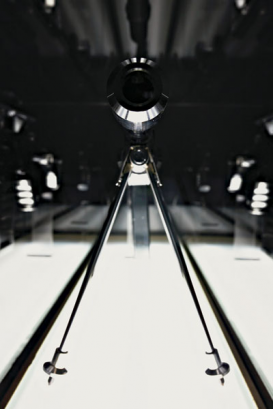




















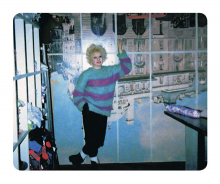
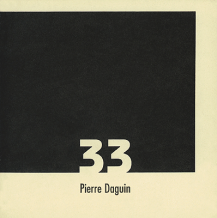
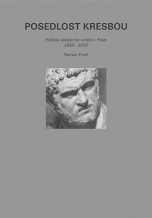
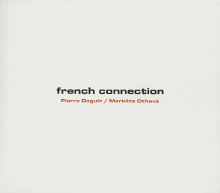


 We Are Rising National Gallery For You! Go to Kyjov by Krásná Lípa no.37.
We Are Rising National Gallery For You! Go to Kyjov by Krásná Lípa no.37.
Comments
There are currently no comments.Add new comment